Women in Safety: Thinking Differently, Acting Diversely, Leading Decisively
By Alaina Zieglar, Director of Safety and Human Performance, Lewis Services
Imagine this: Steve Harvey—America’s gregarious gameshow host, comedian, and author—has been asked to serve as a guest speaker at the 2024 Trees & Utilities Conference in Fort Worth, Texas. To kick things off on a fun note, Harvey calls two companies up to the stage to play a quick round of Family Feud. After some good-natured tree puns that were “oak-kay,” Harvey poses the following question: “We asked 100 people, what comes to mind when you think of safety?”
Both companies immediately hit their buzzers and excitedly rattle off answers like hard hats, harnesses, drop zones, and all-stops, while audience members eagerly add 360 Walkaround, pre-job surveys, flaggers, and gear checks. Harvey’s eyes grow wide as he slowly turns to face the enthusiastic crowd and teasingly quips, “Not the answers I would get from MOST people…. You folks sure have an interesting way of looking at things!”
Thinking Differently
In this fictitious yet fun scenario, Harvey seems to suggest that people in the utility vegetation management sector think about safety differently than the general population, and he would be correct! Thinking differently (and perhaps more importantly, thinking diversely) is necessary for creating an environment that fosters innovation, collaboration, and inclusivity—all critical conditions for advancements in safety.
Today’s evolving UVM workforce is becoming increasingly diverse in its cultural, racial, and gender makeup. At my company Lewis Services, a 100% employee-owned company with 60% minority workforce, greater diversity at all levels of the company has positively impacted how we view everything from communications to training, from policies to processes. Lewis and our vegetation management colleagues are continuously investing in diversity, equity, and inclusion (DE&I) programs because it’s the right thing to do, the smart thing to do, and yes, the “safety” thing to do.
As a female professional who has dedicated my entire career to safety in “traditionally male” sectors, it is gratifying to see more women pursuing careers and leadership positions in industries such as UVM, construction, manufacturing, auto tech, and skilled trades. Organizations like the Utility Arborist Association are helping to shepherd this movement by shining a light on women in UVM through events like the Women in Vegetation Management Workshop at the annual Trees & Utilities Conference and a dedicated “Women in VM” column in every issue of the Newsline. It’s a privilege for me to contribute this article to those efforts.
Acting Diversely
The need for more women in predominantly male sectors is not exclusive to the VM industry. According to a report by the Bureau of Labor Statistics in 2023, less than 30% of the manufacturing workforce is represented by women, and that statistic falls to just 11% in the construction sector. The percentage of women in UVM hovers around 22%. With chronic labor shortages in these fields, accelerated recruitment of women candidates is not only necessary from an operations standpoint but critical from a diversity standpoint.
Heather Steranka, Lewis’ Director of Diversity, Equity, & Inclusion, points to research that further illustrates how diverse leadership provides many benefits for businesses. “McKinsey & Company have compiled and analyzed compelling data over several years that shows, without a doubt, companies with higher gender, racial, and ethnic diversity on their executive teams are more than 25% more likely to have above-average profitability than companies that don’t.” And while many companies see the value of developing a diverse workforce to build culture and impact, they may not be as aware of the safety benefits connected to diversity—benefits that are amplified with women at the table.
In an EHS Today article (Valentic, 2019), the American Society of Safety Professionals (ASSP) CEO Jennifer McNelly stated, “Diversifying the safety profession is not about meeting quotas. It’s really about safety.” She continued, “We want to create work environments that ensure that all employees are safe. If women—or any other group—don’t have a voice at the table, then their perspectives are lost, along with opportunities to protect the workforce at large.”
From a historical perspective, women have been behind some of the most transformative safety standards that continue to impact our world today. In the article “Women’s Achievements in Safety” (ASSP, 2019), the American Society of Safety Professionals pays homage to women who have improved safety through inventions such as the first railroad crossing gates (Mary Riggin) and a maritime navigation system using pyrotechnics (Martha Costen). The article recognizes Rebecca Lukens, who greatly improved safety conditions at the Lukens Steel Company iron and steel mill that she owned and managed until 1847, and Emily Warren, the chief engineer during construction of the Brooklyn Bridge from 1872–1883.
Leading Decisively
The trails blazed by these enterprising women are now championed by a new generation of women in safety. Today’s women are advancing safety protocols in medicine, transportation, government, and even outer space. Women like Elizabeth Dole, who successfully implemented the mandatory third brake light on all passenger cars while serving as the first female U.S. Secretary of Transportation, and Hilda Solis, the first Hispanic woman to serve as U.S. Secretary of Labor who lobbied for stricter safety regulations and penalties for those who violated wage and hour regulations (ASSP, 2019).
As Director of Safety and Human Performance at Lewis, I am excited about the advancements in safety that are taking place in our company and across the sector. A balanced blend of compliance and human performance (HP) shifts us from a blame-based culture to a learning organization that drives continuous improvement. As a female safety leader, I see significant benefits to this holistic approach to safety and firmly believe that compliance and HP have a place in every department, not just in the field. In the same way that we implement HP tools on jobsites to mitigate risks, we have the opportunity to leverage the tenets of HP to reduce financial, compliance, and technological risk across the entire organization.
Together, women in utilities are improving and innovating company-wide safety narratives that adopt a comprehensive view of safety, integrate the principles of HP and DE&I, and provide a safer space for all. With women holding leadership positions across the sector, the horizon is big and bright for women in UVM and safety.
References
Valentic, S., “Women in Safety: How to Attract, Retain, and Develop a Diverse Workforce,” EHS Today, September 27, 2019.
“Women’s Achievements in Safety,” American Society of Safety Professionals (ASSP), March 8, 2019.
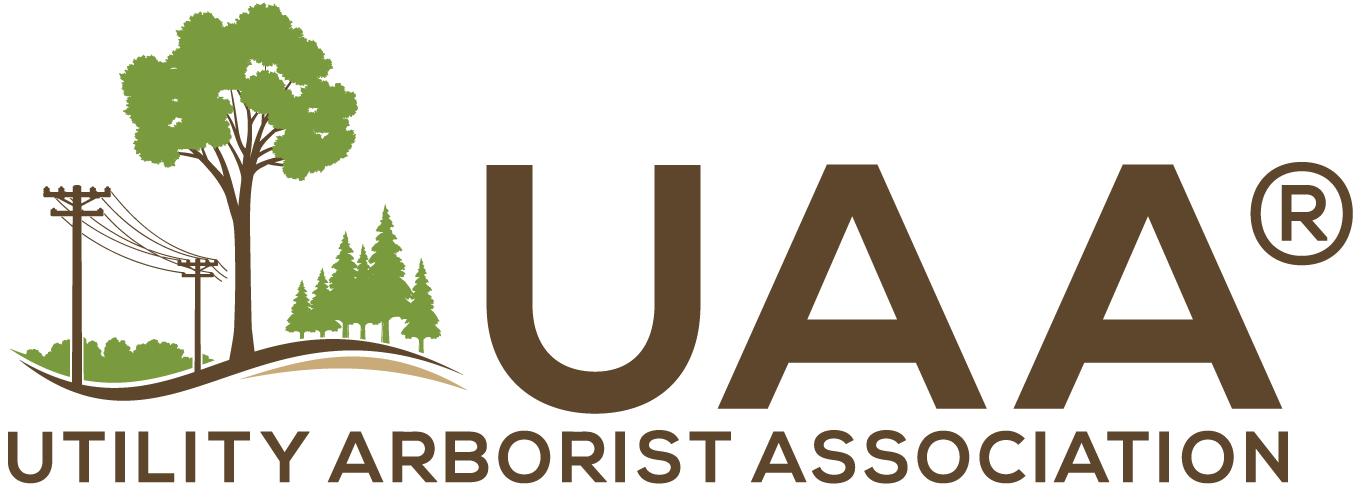
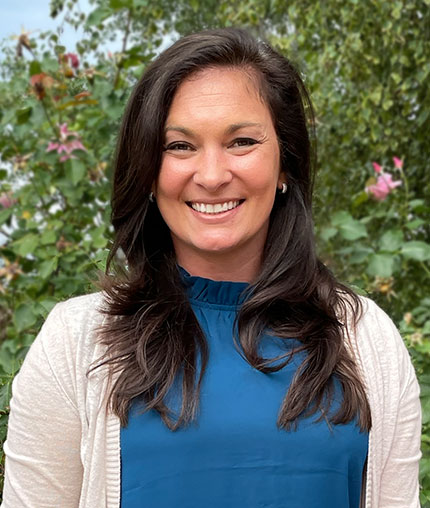
 Josh Beaver is currently senior vice president of Eocene Environmental Group, a utility vegetation management (UVM) consulting and operations firm. Josh has more than two decades of experience within the UVM industry. He is currently responsible for relationship management and oversight of long-term UVM contracts throughout the United States and Canada. He considers customer and community communication to be vital aspects of his role, and he has a proven record of success working with utilities.
Josh Beaver is currently senior vice president of Eocene Environmental Group, a utility vegetation management (UVM) consulting and operations firm. Josh has more than two decades of experience within the UVM industry. He is currently responsible for relationship management and oversight of long-term UVM contracts throughout the United States and Canada. He considers customer and community communication to be vital aspects of his role, and he has a proven record of success working with utilities.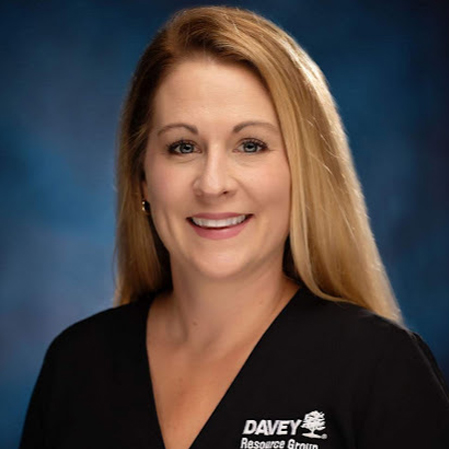
 Sam joins the UAA crew with over a decade of non-profit experience behind her. As our Partnership Coordinator, her focused efforts on building relationships with diverse funders will include crafting proposals, cultivating connections, and cohesively earning dedicated sponsors to support the sustainability of UAA substantially and empowering our programs. Well equipped with professional skills which include program development, public speaking, proposal writing, donor relations, working with diverse stakeholders, coalition building, and public-facing service. Sam’s educational background includes a BS in Animal Ecology with a minor in Animal Science, and a MA in Philanthropy and Non-profit Development.
Sam joins the UAA crew with over a decade of non-profit experience behind her. As our Partnership Coordinator, her focused efforts on building relationships with diverse funders will include crafting proposals, cultivating connections, and cohesively earning dedicated sponsors to support the sustainability of UAA substantially and empowering our programs. Well equipped with professional skills which include program development, public speaking, proposal writing, donor relations, working with diverse stakeholders, coalition building, and public-facing service. Sam’s educational background includes a BS in Animal Ecology with a minor in Animal Science, and a MA in Philanthropy and Non-profit Development.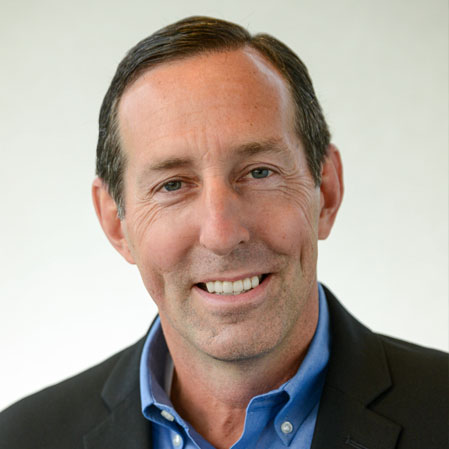 Tim is the Vice President of Safety & Training for the Townsend Tree Company, LLC.
Tim is the Vice President of Safety & Training for the Townsend Tree Company, LLC. Sara Dreiser is a Senior Program Manager with ComEd. She works with a team to oversee ComEd’s routine cycle maintenance and ComEd’s interruption investigation programs. She has been working in the Vegetation Management industry for close to 15 years.
Sara Dreiser is a Senior Program Manager with ComEd. She works with a team to oversee ComEd’s routine cycle maintenance and ComEd’s interruption investigation programs. She has been working in the Vegetation Management industry for close to 15 years.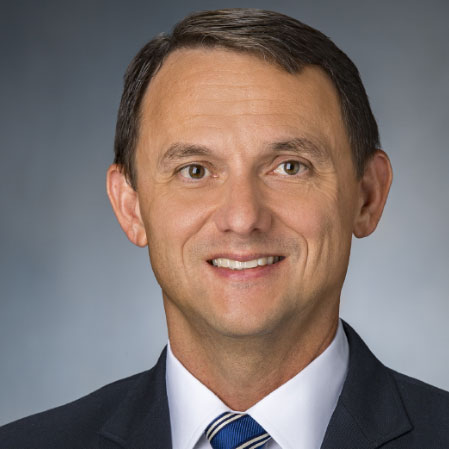 Matt Goff is a Transmission Vegetation Manager at Georgia Power Company. He lives in Brookhaven, GA with his wife, two daughters, and the family’s two dogs Sam, and Payton. For leisure, he enjoys sports with his family, bird hunting, and salt-water fishing.Matt holds a BSFR from the University of Georgia in Forest Resource Management and he graduated in 1997. He has worked in the vegetation management industry for 26 years. His work experience includes six years as a procurement forester for a forest products manufacturer, and 20 years in the utility vegetation management industry with Georgia Power.
Matt Goff is a Transmission Vegetation Manager at Georgia Power Company. He lives in Brookhaven, GA with his wife, two daughters, and the family’s two dogs Sam, and Payton. For leisure, he enjoys sports with his family, bird hunting, and salt-water fishing.Matt holds a BSFR from the University of Georgia in Forest Resource Management and he graduated in 1997. He has worked in the vegetation management industry for 26 years. His work experience includes six years as a procurement forester for a forest products manufacturer, and 20 years in the utility vegetation management industry with Georgia Power. Brandon graduated from Minnesota State University–Mankato with a B.S. in Geography. Brandon has been with Rainbow Tree Company since 2009 and has gained experience in several roles, including Business Developer for our utility products division, GIS Tree Inventory Analyst, and Technical Arborist. Brandon has been the Director of VM Services, the fastest growing division inRainbow Tree Company, since 2012.
Brandon graduated from Minnesota State University–Mankato with a B.S. in Geography. Brandon has been with Rainbow Tree Company since 2009 and has gained experience in several roles, including Business Developer for our utility products division, GIS Tree Inventory Analyst, and Technical Arborist. Brandon has been the Director of VM Services, the fastest growing division inRainbow Tree Company, since 2012.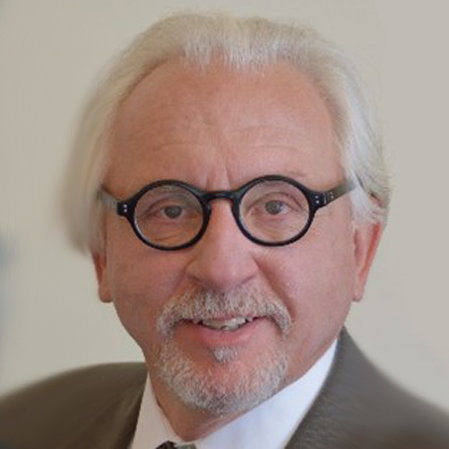 A winner of the David H Nabi Award for dedication and service, Dr. Robert Vanderhoof earned his Ph.D. from the College of Forest Resources at Mississippi State University in 1995. A veteran natural resource manager, Robert spent 15 years as Florida’s Deer Management Section Chief during which time he coordinated range management activities across Florida’s seven-million-acre wildlife management area system.
A winner of the David H Nabi Award for dedication and service, Dr. Robert Vanderhoof earned his Ph.D. from the College of Forest Resources at Mississippi State University in 1995. A veteran natural resource manager, Robert spent 15 years as Florida’s Deer Management Section Chief during which time he coordinated range management activities across Florida’s seven-million-acre wildlife management area system.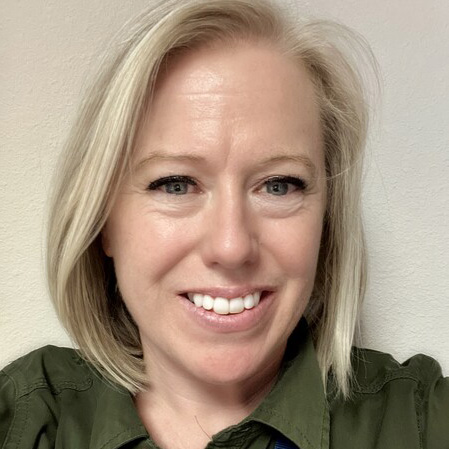 Amanda Opp, Certified Utility Vegetation Management Professional Flathead Electric Cooperative, Integrated Services Manager, University of Wisconsin Stevens Point, Course Facilitator
Amanda Opp, Certified Utility Vegetation Management Professional Flathead Electric Cooperative, Integrated Services Manager, University of Wisconsin Stevens Point, Course Facilitator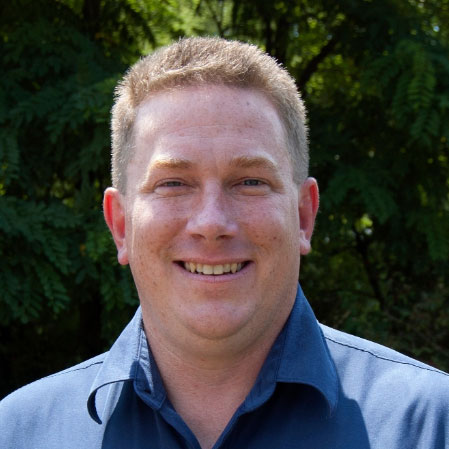 Jim Neeser is a business developer for the Davey Resource Group, a division of the Davey Tree Expert Company. Jim primarily works with utility companies to provide innovative and customized solutions. Jim earned his AA from Vermillion Community College in 1997 and his BS in Forestry with an emphasis on Hydrology and Soils from the University of Minnesota in 2000. Jim is an ISA Certified Arborist with the Utility Specialist endorsement. Jim has been involved in the UAA training committee for nearly a decade as a past chairman and is currently the treasurer and Champion of the finance committee. Jim spent his first 7 years in the industry as a field arborist in the commercial and utility markets. The last 10 years, Jim has been working with utility companies to enhance their Integrated Vegetation Management programs. Jim’s other interests include spending time with his family, sports, hiking, fishing and coin collecting. Jim is also active with the Boy Scouts of America as an Eagle Scout. Jim lives in Forest Lake, MN with his wife and 2 children.
Jim Neeser is a business developer for the Davey Resource Group, a division of the Davey Tree Expert Company. Jim primarily works with utility companies to provide innovative and customized solutions. Jim earned his AA from Vermillion Community College in 1997 and his BS in Forestry with an emphasis on Hydrology and Soils from the University of Minnesota in 2000. Jim is an ISA Certified Arborist with the Utility Specialist endorsement. Jim has been involved in the UAA training committee for nearly a decade as a past chairman and is currently the treasurer and Champion of the finance committee. Jim spent his first 7 years in the industry as a field arborist in the commercial and utility markets. The last 10 years, Jim has been working with utility companies to enhance their Integrated Vegetation Management programs. Jim’s other interests include spending time with his family, sports, hiking, fishing and coin collecting. Jim is also active with the Boy Scouts of America as an Eagle Scout. Jim lives in Forest Lake, MN with his wife and 2 children. Adam’s experience includes leading business development strategies for a utility vegetation management consulting firm, vegetation management field operations at two major investor-owned utilities in the southeastern US, project management at a variety of utilities in the mid-Atlantic and southeastern regions, and vegetation management program development and assessments across the country. His utility arboricultural experience provides a broad understanding of the many different methods used to create a successful utility right-of-way, vegetation management program, including remote sensing, data analytics, optimization, and the utilization of third-party consulting foresters for planning and auditing duties.
Adam’s experience includes leading business development strategies for a utility vegetation management consulting firm, vegetation management field operations at two major investor-owned utilities in the southeastern US, project management at a variety of utilities in the mid-Atlantic and southeastern regions, and vegetation management program development and assessments across the country. His utility arboricultural experience provides a broad understanding of the many different methods used to create a successful utility right-of-way, vegetation management program, including remote sensing, data analytics, optimization, and the utilization of third-party consulting foresters for planning and auditing duties. Craig works for Pacific Gas and Electric as a Principal Program Manager in Land Management. His career spans 30 years in the utility industry serving numerous roles. He is an ISA Certified Arborist, Utility Specialist, and hold his TRAQ and is a TCIA Certified TreeCare Safety Professional. Craig has been engaged and involved in the UAA for many years, starting back in 2008. He then wanted more so he ran for UAA President and was elected in 2014. Today, Craig looks back over his 30-year career and wouldn’t change a thing, he’s made life-long friends and considers many as mentors. He also claims he would not be where is in his career if it weren’t for these people, and pledges to pay it forward to support others in their success.
Craig works for Pacific Gas and Electric as a Principal Program Manager in Land Management. His career spans 30 years in the utility industry serving numerous roles. He is an ISA Certified Arborist, Utility Specialist, and hold his TRAQ and is a TCIA Certified TreeCare Safety Professional. Craig has been engaged and involved in the UAA for many years, starting back in 2008. He then wanted more so he ran for UAA President and was elected in 2014. Today, Craig looks back over his 30-year career and wouldn’t change a thing, he’s made life-long friends and considers many as mentors. He also claims he would not be where is in his career if it weren’t for these people, and pledges to pay it forward to support others in their success. Erin Creekmur has been in the UVM industry for over 20 years. After graduating with a Bachelors in Botany from Northern Arizona University she relocated to Northern California to start her professional career. Starting as a consulting utility pre-inspector with Western ECI she quickly moving up to the ranks to Supervisor under the tutelage of folks like Nelson Money. In 2004, Erin joined PG&E as a Quality Assurance Auditor for the VM program. Eventually becoming the Program Manager for the North Coast Division, helping stand up the beginnings of CEMA as the Emergency Drought Response Initiative Lead for the Enhanced Inspection & Mitigation Program, targeting off-cycle hazard trees across the system. In 2015, Erin moved back to her home state of Arizona and took the role of Division Supervisor with Arizona Public Service, managing both transmission and distribution UVM programs out of the Flagstaff area. As part of her role with APS Forestry Fire and Resource Management Department, Erin had responsibility for creating a Hazard Tree Mitigation program. maintaining APS’s ROW Stewardship Accreditation, FERC reporting, and the Transmission Lidar program. In 2021, Erin took a shift in her career and is now Supervising the Customer Construction and Design team for APS, expanding her overall understanding of the Utility industry. Erin continues to maintain her ISA Utility Specialist Certification and TRAQ. She has also completed certifications in both Six Sigma and Lean Sigma Green Belt through accredited universities. In addition to her current service on the UAA Board of Directors, Erin spent the last 6 years as an officer with the Arboretum at Flagstaff Board of Directors. In her free time, you can find Erin in the woods taking pictures of native plants and beautiful western landscapes.
Erin Creekmur has been in the UVM industry for over 20 years. After graduating with a Bachelors in Botany from Northern Arizona University she relocated to Northern California to start her professional career. Starting as a consulting utility pre-inspector with Western ECI she quickly moving up to the ranks to Supervisor under the tutelage of folks like Nelson Money. In 2004, Erin joined PG&E as a Quality Assurance Auditor for the VM program. Eventually becoming the Program Manager for the North Coast Division, helping stand up the beginnings of CEMA as the Emergency Drought Response Initiative Lead for the Enhanced Inspection & Mitigation Program, targeting off-cycle hazard trees across the system. In 2015, Erin moved back to her home state of Arizona and took the role of Division Supervisor with Arizona Public Service, managing both transmission and distribution UVM programs out of the Flagstaff area. As part of her role with APS Forestry Fire and Resource Management Department, Erin had responsibility for creating a Hazard Tree Mitigation program. maintaining APS’s ROW Stewardship Accreditation, FERC reporting, and the Transmission Lidar program. In 2021, Erin took a shift in her career and is now Supervising the Customer Construction and Design team for APS, expanding her overall understanding of the Utility industry. Erin continues to maintain her ISA Utility Specialist Certification and TRAQ. She has also completed certifications in both Six Sigma and Lean Sigma Green Belt through accredited universities. In addition to her current service on the UAA Board of Directors, Erin spent the last 6 years as an officer with the Arboretum at Flagstaff Board of Directors. In her free time, you can find Erin in the woods taking pictures of native plants and beautiful western landscapes. Fallon is a Utility Arborist and Executive Director of the Utility Arborist Association. Prior to his current role he was responsible for leading vegetation management programs across several upper Midwest states on behalf of a large investor-owned utility. He’s also been an adjunct professor at the University of Wisconsin-Stevens Point, where he facilitated the
Fallon is a Utility Arborist and Executive Director of the Utility Arborist Association. Prior to his current role he was responsible for leading vegetation management programs across several upper Midwest states on behalf of a large investor-owned utility. He’s also been an adjunct professor at the University of Wisconsin-Stevens Point, where he facilitated the 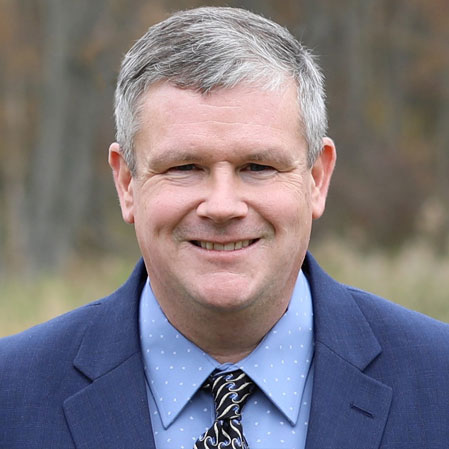 Kevin Puls is the president of ACRT. He has been with the company for more than 25 years and began his career with us as a work planner in western Ohio. He worked his way up to become an operations manager, senior operations manager, and director of operations. During his tenure he has managed utility vegetation contracts, municipal forestry programs, performed environmental compliance inspections, and many more items. He has worked with over 50 customers in over 40 states. He attended Mount Union College where he obtained a bachelor’s degree in biology with a concentration in ecology. He completed his internship at Harvard Forest in Petersham, Massachusetts as part of a grant from the National Science Foundation. Kevin performed studies on plant-soil-air interactions and presented his research in multiple forums. Kevin also holds an MBA in Executive Management from Ashland University. Kevin also serves as a committee member on multiple BSA troops and conservation organizations.
Kevin Puls is the president of ACRT. He has been with the company for more than 25 years and began his career with us as a work planner in western Ohio. He worked his way up to become an operations manager, senior operations manager, and director of operations. During his tenure he has managed utility vegetation contracts, municipal forestry programs, performed environmental compliance inspections, and many more items. He has worked with over 50 customers in over 40 states. He attended Mount Union College where he obtained a bachelor’s degree in biology with a concentration in ecology. He completed his internship at Harvard Forest in Petersham, Massachusetts as part of a grant from the National Science Foundation. Kevin performed studies on plant-soil-air interactions and presented his research in multiple forums. Kevin also holds an MBA in Executive Management from Ashland University. Kevin also serves as a committee member on multiple BSA troops and conservation organizations. Renée is our Member Services Manager. She is available to UAA members for questions on committee assignments, educational opportunities, scholarships, CEU questions, and any other assistance.
Renée is our Member Services Manager. She is available to UAA members for questions on committee assignments, educational opportunities, scholarships, CEU questions, and any other assistance.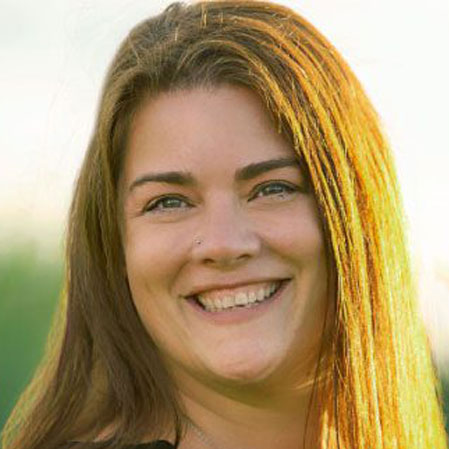 Diona has been with the Utility Arborist Association (UAA) since December 2015 and has worked in various capacities within the organization.
Diona has been with the Utility Arborist Association (UAA) since December 2015 and has worked in various capacities within the organization.